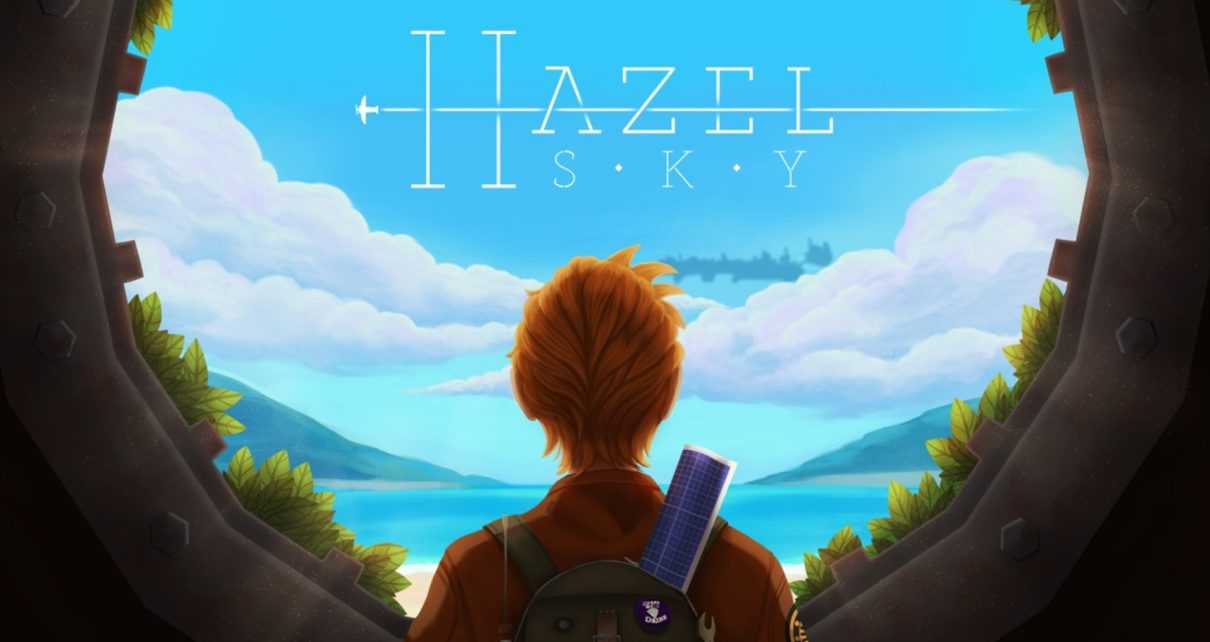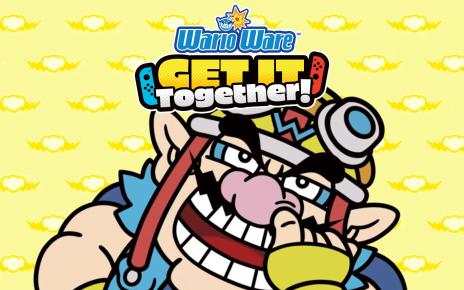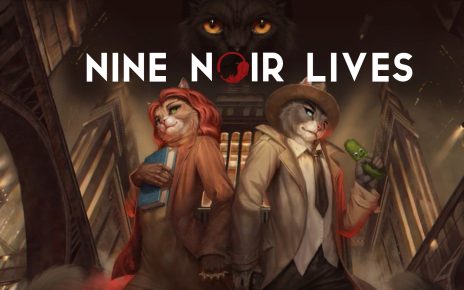Developed by Coffee Addict Studio and published by Neon Doctrine (formerly Another Indie), Hazel Sky is a story-rich puzzle adventure game where Shane Casey would undergo the Trials in hope of becoming a full-fledged engineer of Gideon. This indie 3D game was released for PC (Windows), Xbox One, Playstation 4, and Nintendo Switch in July 2022. It flies players into a world with pretty scenic spots, bizarre mysteries, and a clash of ideals between engineers and artists.
A Trainee’s Unhurried Exploration
After a cinematic opening that briefly prefaces the background behind Shane’s travel to a remote island, Hazel Sky drops players into its world without providing much direct guidance, apart from a few timely and succinct control prompts. Exploration in this game is a relatively free and easy experience throughout. You can technically go wherever and do whatever you want within the limits of the present venue. Furthermore, there is no time constraint to completing the main tasks required for the storyline to proceed forward. So, you can slowly read the book you just picked up or thoroughly scrutinize an object you found nearby.
While not always obvious, different forms of clues are sprinkled in various venues to nudge players towards important locations. In the starting venue, for example, there is a signboard pointing out an item to take and the floor to head to. At the second venue, in addition to a signboard, Shane would also make a verbal remark about a place of interest as he walked towards it. Noisy seagulls hang around near objects of interest as well. Then, there is an unmissable train track that passes by key locations within the third venue. These in-world hints informing one about interesting locations can be found by looking around the surroundings carefully, and they have not overtly distracted or indirectly dictated my exploration of Hazel Sky’s world.
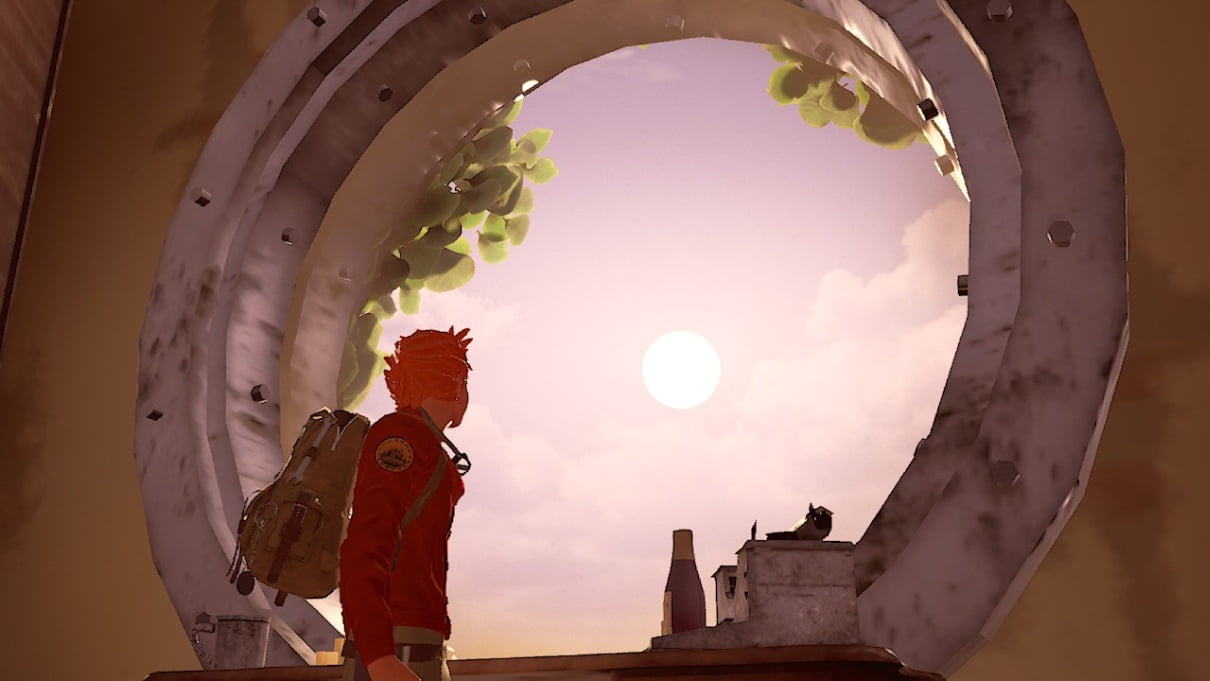
In general, exploration within venues is considerably unrestricted. The second venue, in particular, allows for the least linear exploration whereas the final venue is the most restrictive. However, no matter how many ways you can run about the venues in Hazel Sky, there is just one way to complete each given task and one way to progress the storyline. Moreover, each new chapter brings a new venue and there is no backtracking when a venue has been completed.
Although there are several omittable collectibles, radios, and locations, there is practically no incentive to play the game a second time — not even for finding the missed items. This is because it is an absolute chore to replay Hazel Sky. First, there is no chapter select, so players will have to start their subsequent playthroughs right from the beginning. Next, there is no way to skip the video cutscenes, radio calls, and main tasks to quickly get to the point where one may have missed out something previously. Finally, if it is the extra epilogue scene that is missed during the first playthrough, the 1 minute 40 seconds ending cinematic is still not worth the effort of going through the exact same motions for the entire Trials once more, especially if one is short on patience or time. Until there is a much less tedious way to replay it, this game would be best approached as one that has to be completed fully within the first playthrough.
An Engineer’s Deadly Athletic Trials
The Trials Shane has to pass in order to become an engineer of Gideon are really peculiar. There is an explanation in-game that mentions why the Trials are like so. Even so, it is certainly a trial I would never have passed if I had to get my Biomedical Engineering degree from Gideon. I doubt I would have been able to latch onto the remaining broken staircase, much less haul myself up to the next floor. I would have easily met my end there, early on inside the starting venue, when the only means I could get out was via brute strength and physical finesse instead of good old problem-solving skills. For the number of times that Shane has to scale high walls without a harness like a wall gecko, carefully cross the thin wooden planks like a circus performer walking the tightrope, or swing himself from point to point using the dangling rope like Tarzan, this specific set of Trials for the new Gideon engineers seems more suited for athletes.
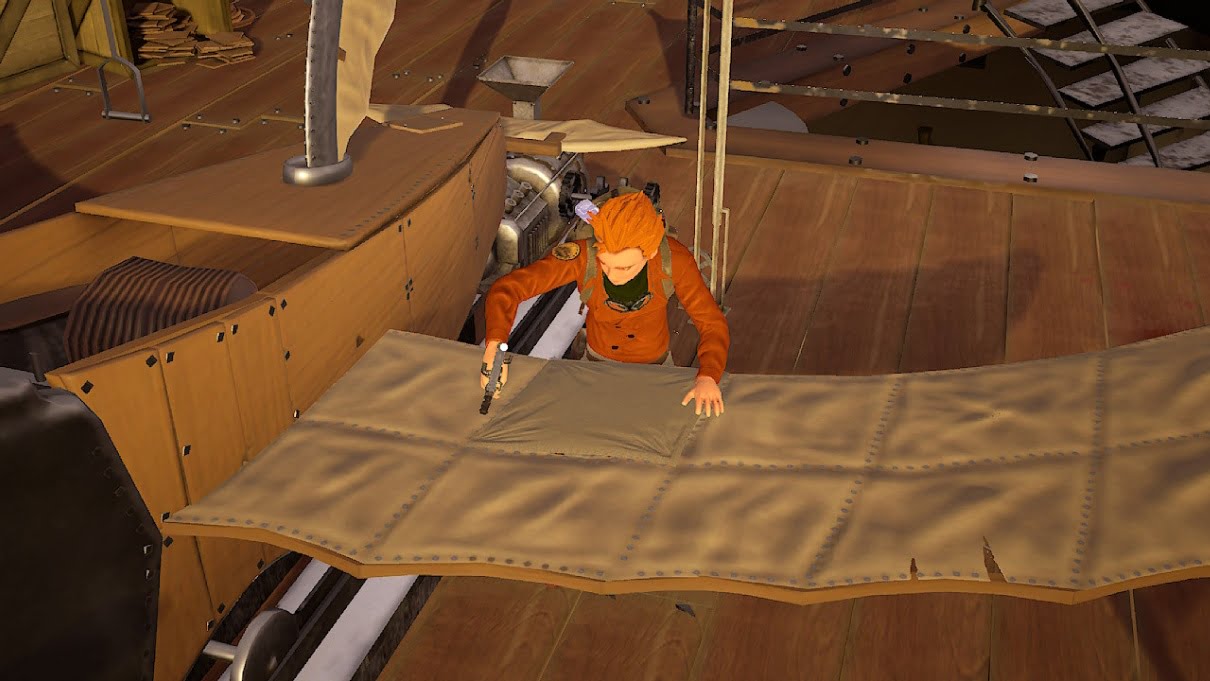
Indeed, there is not much engineering work to be done for the whole Trials in Hazel Sky. At most, you get to figure out which item fits where (in response to Shane’s “I need to use this somewhere” prompt whenever he picks up something usable) and do some brazing. Almost all venues feature some puzzles to be solved, which is great because engineers are problem solvers, but most solutions sadly do not require much logical or creative thinking. In fact, any opportunity for creative problem-solving is cruelly stripped away since all the puzzles accept only one fixed solution.
Moreover, the designated solutions are a little too straightforward and rarely thought out of the box. Wooden planks nailed to an entranceway? Easy-peasy, simply yank them out by hand; who needs complicated tools when they are Hulk? As mentioned, there is a narrative reason for such a simplistic nature of the Trials. Though I am disappointed that my attempt to step on top of the hand-operated elevator to lift Shane further upwards is a no-go, the lack of creativity in the trainees’ problem-solving is actually consistent with the intended portrayal of Gideon engineers.
Nevertheless, there are puzzles with restrictions and designs that are plainly absurd, even within the boundaries of the narrative. For instance, two specific locations have more than one immediately accessible entry point each, but you can enter either place for the first time from only one of its entrances. The need for logical thinking is also minimized in several puzzles where the interaction visual cues will tell you if the object in Shane’s hands is supposed to be placed there or not. At one point, there are three similar gears you have to affix to three identical pillars, and there are just no other clues given beside you holding one gear and then standing next to a pillar to check what the interaction visual cue tells you. However, the most frustrating “puzzle” has to be unlocking one of the optional treasure chests: I eventually opened it by brute-forcing through all number combinations starting from 000 until the correct one. I thought I had totally missed the clue to the lock number somewhere at first. But after reading the scattered papers nearby over and over, and even counting the number of coconuts and books lying inside the makeshift hut, I still did not figure out how else one is supposed to solve the lock combination based on the information provided in-game.
Though Hazel Sky presents a rather beautiful world to relax in and explore, its puzzles, in spite of their casual nature, generally make an unpleasant dent in the experience. Physics-dependent puzzles that involve movement action require the player to have reasonably good hand-eye coordination and reaction time. Personally, I lost count of the number of times Shane died en route to a main location, sliding down the muddy slope and failing to jump to safety at the right moment or angle. Several times I managed to make Shane reach the opposite wall, but not within the right height range for him to grab onto the planks there. Similar phenomenon occurred while trying to jump and hold onto any dangling rope. A few times, Shane missed the rope even though I pressed the ZR button as soon as I saw Shane’s body get close to it — at least from what the single third-person camera view showed me. The permissible margin of error feels somewhat small and there are no other systems or audio-visual cues in place to mitigate near-misses.
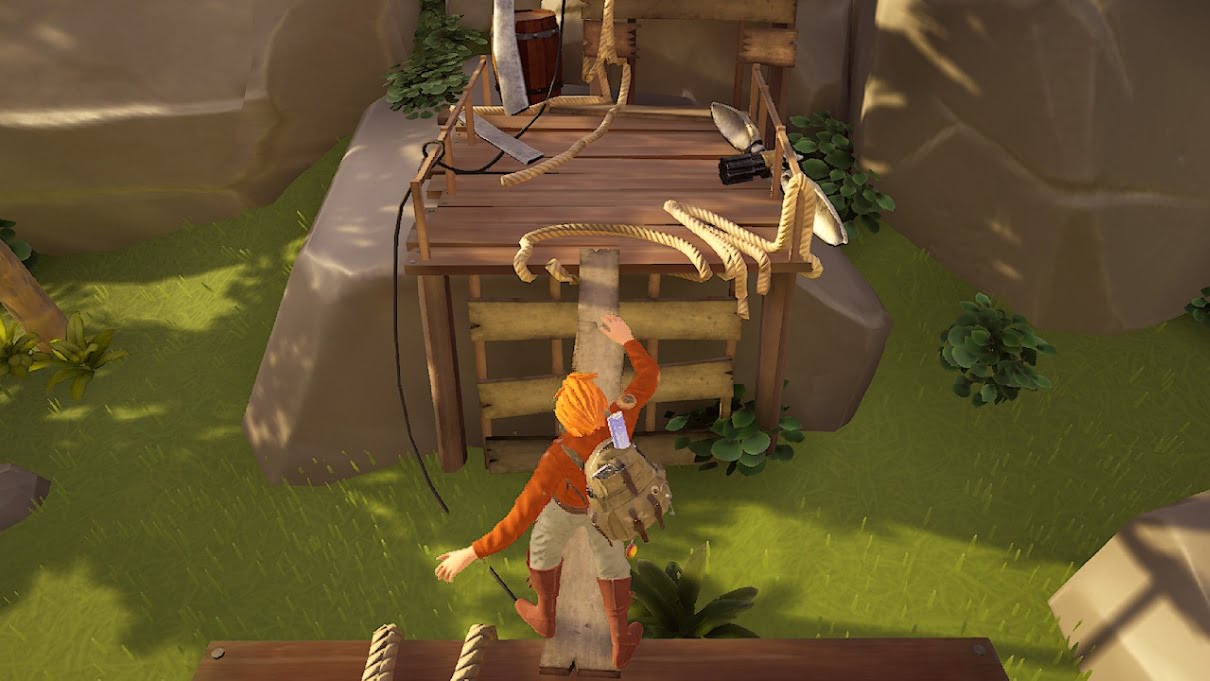
The action-based puzzles in Hazel Sky may not be very meaningful under the context of an engineer’s Trials, but the majority of them are fun for a short while. I enjoyed swinging Shane on the rope the most, watching him gain more and more momentum with each swing and then fly off once he lets go. The frantic cling to safety after sliding down a slope is exhilarating but naturally only when the attempt is a success; otherwise, it is merely exasperating. The ones I detest are those involving thin wooden planks suspended in mid-air. I had to retry climbing the windmill multiple times because Shane kept losing his footing after making a 90-degree turn to the next wooden plank. Shane also fell to his demise several times trying to walk along a zigzag path made from the same thin wooden planks. In the end, I cheated that part by letting Shane slip towards the interior side of the building so his falls will be broken by the beams underneath till he touches the ground.
Treasure Hunting on the Islands
Between the exploration and puzzle aspects of Hazel Sky, I definitely enjoyed the former more. As soon as the game relegated character control to me, I was instantly pulled in by the little things I can find around the venue. The only graphics setting supported on the Switch version is in the medium-low quality range. It is a shame the raindrops are barely visible when it rained in-game. Nonetheless, I was mesmerized by the colorful environment and the intriguing places and items hidden within. I especially love the tranquil closing arc of the third chapter, during which I rode on the train around the island under the warm golden rays of the setting sun whilst listening to the relaxing strums of the wistful guitar background music.
From the skeletal corpses, some of which Shane could — to my bafflement — correctly guess their identity based purely on their clothes, to the assortment of badges and keys Shane can add to his bag, there are quite a number of curious objects scattered across the lands in Hazel Sky. Unless an item is specifically marked as a collectible, such as a book or a note, Shane will not be able to examine it closely. While I appreciate the ability to rotate a collectible item around in Shane’s hand and view it from all sorts of angles, I wished the objects had some secrets to be further discovered via this interaction mechanic, such as an engraving you will spot only if you turn an object upside down. Shane also cannot interact with the beds and chairs, though he can wake up on them depending on where he was at during the last autosave point. Shane, however, can play with the few select guitars found only in the first three chapters.
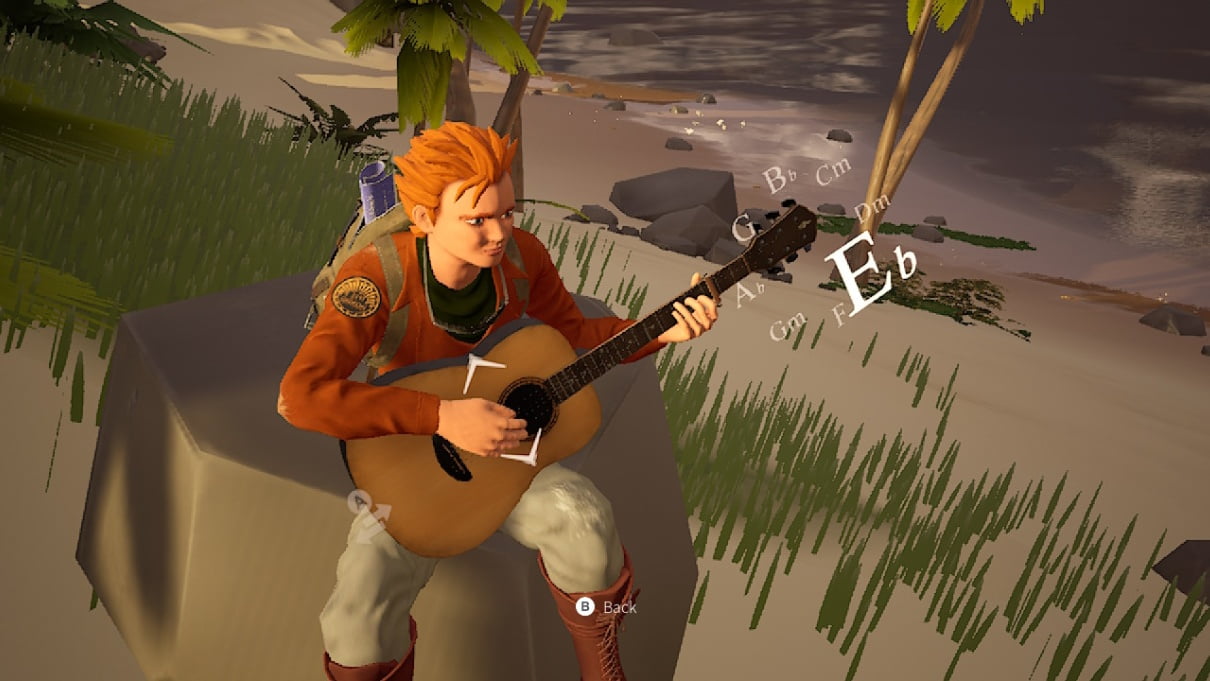
The guitar music segment is the most rewarding part of the entire game for me. I was so looking forward to playing more guitar music when I got out of the first venue, I basically ran around the second venue trying to find a guitar first before anything else. Clearly, I really do not care much about the Trials. Why bother with the outdoor obstacle courses when I can immerse myself in some enchanting music? Alas, Shane still has to do all sorts of acrobatic tricks, including a fast dash up a collapsing staircase, to get to most of the scattered music notes. But at least the excitement of playing a new song is worth the effort. The six songs Shane can play are short pieces carrying various moods, with most having an introspective edge. My favorites include “Sabrina”, which sounds heartbreakingly hopeless. “Brown Witch” is another song I like to play again and again in Hazel Sky for its cold and mystical melody.
These songs are not sung by the same voice artists as the protagonist but by a separate singer, Gabriela Maccarini Brito Ferreira. Nevertheless, the game manages to make it look like Shane is the one singing the songs through meticulous character modeling that matches his mouth and hand movements to the respective songs. I was also impressed when I noticed Shane’s fingers actually change positions for different chords, even though his strumming is not always in line with the music. On the whole, the 3D character models used in Hazel Sky are handled with much thought. I am particularly amused by the little reactions applied to the playable characters. For example, Shane would cover his nose with his right hand and fan the air with the other hand when he nears a stinky toilet. But I have to say it was not as funny when he performed the same gesture near a rotting corpse.
There is much to see and find on land, many of which contribute to Hazel Sky’s environmental storytelling. Close to one of the machines, somebody’s finger remains to serve as an age-old chilling safety advisory. Perhaps I will never wish to know the horror story behind the poor lone bison trapped with the carcasses of its friends either. But I was sure intrigued when I saw a pair of boots, shorts, and goggles tossed in a line on the sandy beach towards the ocean — had someone swum out to sea? I thought I might find something noteworthy if I tried swimming in that direction myself. Unfortunately, compared to the land, the underwater view is not exactly photogenic. Also, Shane could only swim underwater for so long before the screen would start pulsating with an obstructive dark grey border as his lungs screamed for air. What’s more, I got a nasty jump scare when Shane swam too far out and a killer shark came out of nowhere and gobbled him up!

An Emotional Journey With Directionless Ending
Similarly bizarre as the engineer’s Trials, which involved disproportionately more athletic tasks than engineering work, is the story told in Hazel Sky. Its premise is not shabby: following the footsteps of his predecessors in the Casey family, Shane heads to a remote island to undertake the Trials for becoming an engineer. The development is decent too, with Shane having to come face to face with several temptations over the course of the Trials that would derail him from his initial goal. Or rather, practically everything and everyone is telling Shane to give up on the Trials and not return to Gideon. Yet to quite a laughable extent, Shane does not get to choose anyway. I have tried to steer his plane away from Gideon, flying anywhere but forward, and also waited for him to fall off the plane flying upside down. And there is no other route for Shane to go despite the game suggesting such a possibility. Still, the illusion of choice is not what tarnished the story; it is the very ending. I played the game with English subtitles and then once more with Chinese subtitles, and I must say I still do not understand what significance the epilogue adds to the whole story. That finale may very well be the biggest and strangest puzzle in this puzzle game after all.
Even though the main story theme of Hazel Sky is straightforward and the sprinkles of local mysteries made the world more alluring, the eventual knot tied together using the various story threads is awkward. Whether it is Shane’s confusion over his desire to play music or his trepidation as he followed the worrisome happenings in his homeland Gideon through the radio, there are distinct emotional moments observed along the young engineer-to-be’s journey to find himself. I particularly like the inclusion of two other characters’ sides of the tale that kept the storytelling fresh and engaging. With its sympathetic host and lineup of 11 jazzy Dazie Mae songs and seven humorously written in-world advertisements, the activatable radios stationed around the second and third venues provide effective respite from the tense news heard elsewhere. In addition, the ambient music composed by Leonardo (MMAAZZEEBB) Cardoso Maciel accompanying the chapter transitional scenes never fails to give me goose bumps. Sadly, I did not feel any satisfaction watching the epilogue, which I could only describe as cryptic at best.
Besides the disappointing finale, the portrayal of engineers in Hazel Sky is odd and even misleading too. One disagreement Shane had with another engineer trainee is the latter’s seemingly innocent wish for him to have “good luck” on his Trials. It turns out Gideon engineers cannot believe in luck because (if my interpretation is correct) they are supposedly all about absolute precision. So, I guess nobody taught them anything about statistics and probability. Shane also got upset when the other told him a joke involving engineers, explaining that as engineers-to-be, they should not joke about fellow engineers. Maybe this is to faithfully portray Gideon engineers as a population who is taught to reject the artistic side of life, but all I get is the annoying impression that Shane is one uptight kid. Last but not least, “bioengineers” is conveniently thrown in as a synonym for doctors at one point and pharmacologists at another point in the game. Both cases made me shake my head and sigh.
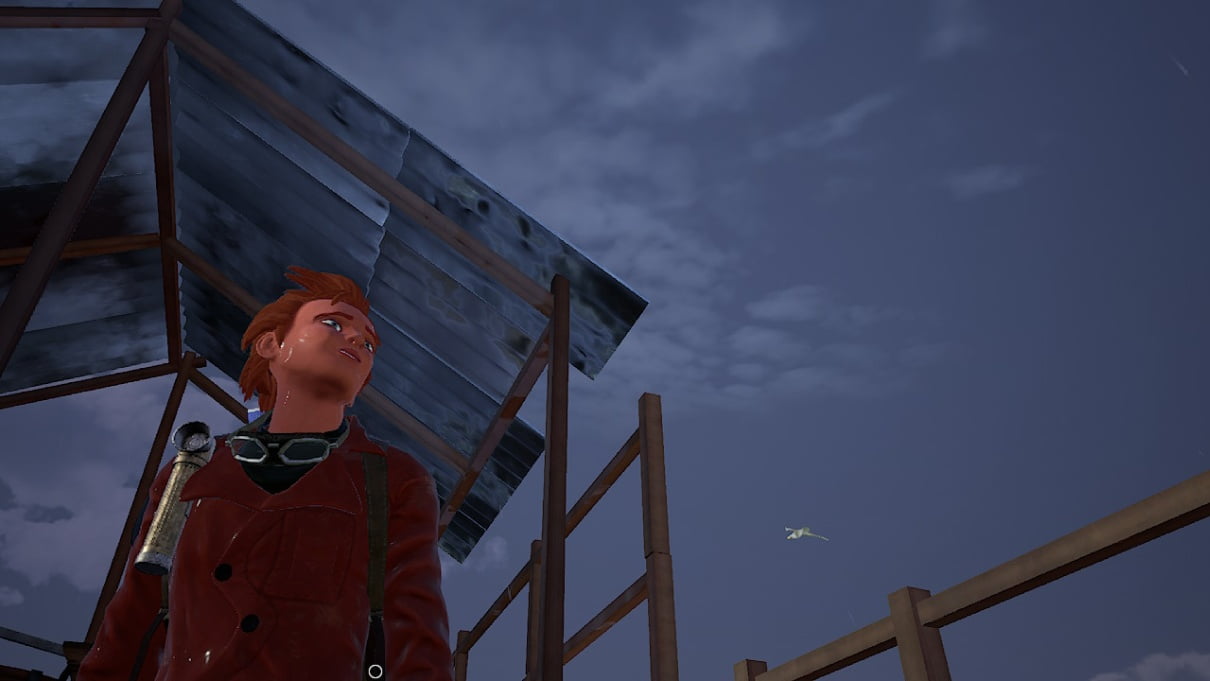
For its narrative purposes, Hazel Sky tried to force a black-and-white dichotomy between engineers and artists. As a result, it gave a really stifled portrayal of engineers who, in any case, could have been considered partly artists by virtue of their innovativeness and craftsmanship. Though the dichotomy, however immaturely presented, worked well in highlighting Shane’s personal struggles as he wrestled between his destined engineer path and desire to play music, the resulting character portrayal is inevitably a shallow one.
What drooped Hazel Sky’s narrative further is the mainly average voice acting. Having played the game fully listening to both the English and Brazilian Portuguese voice-overs, I find the latter to be somewhat better. Most memorably, I like the bright and vivacious disc jockey Videl voiced by MaxMRM in Brazilian Portuguese. I also like Myra’s English voice artist, Jada C. Brazil’s angry revengeful bite when reading the dissident’s unhappiness. Funnily enough, the other engineer trainee’s voice contains more discernible emotions in both languages than the protagonist’s. I hoped we could have heard more of Shane’s confusion, loss, or just a hint of his internal struggles through his voice.
Content Rating and Accessibility Aspects
Hazel Sky has an ESRB rating of Teen with content descriptors of blood, use of drugs, and violence. The mature content description as provided on the Steam store page mentions the “gameplay contains graphic depictions of suicide, human injury, and death.” Additional content warnings I would supplement include explosions, gunshot sounds, lightning flashes, screen shakes, and camera tilting at big angles. There are reports of irremovable chromatic aberration effects for the PC version, but there is no such distortion effect seen on the Switch version. There is also a scene wherein the playable character will vomit onto the floor; it is not skippable but players can move the camera partially away as it occurs.
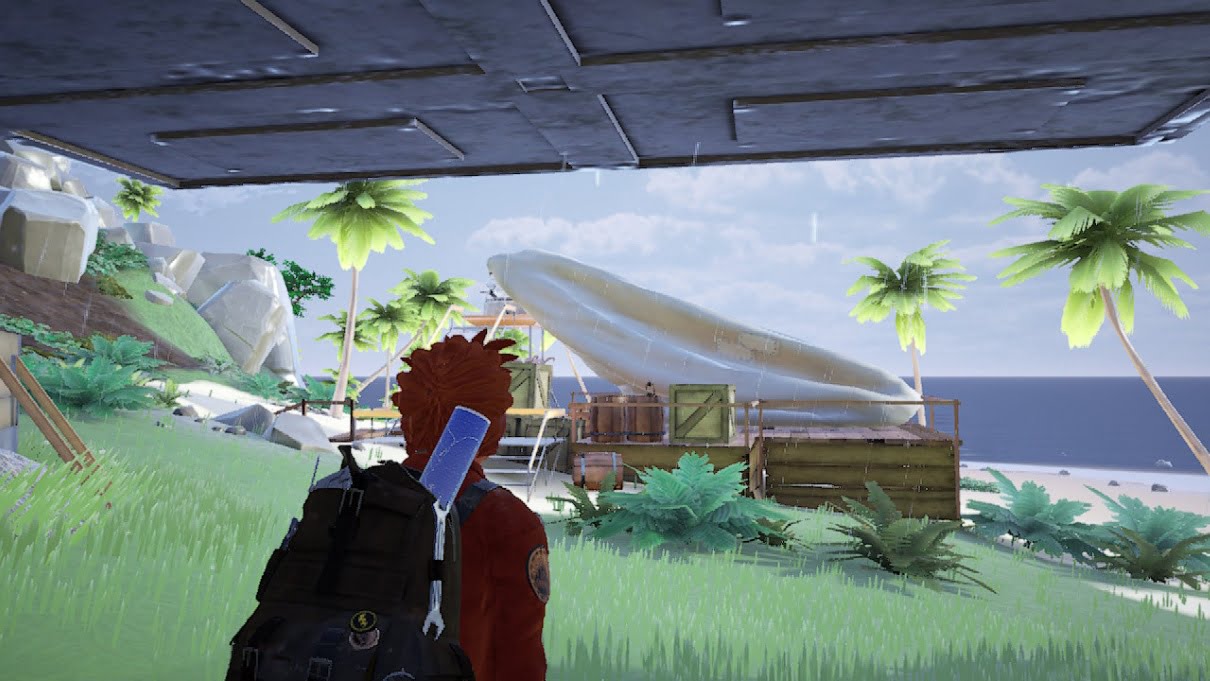
Game settings for Hazel Sky on Switch are split into three categories under “Options”: gameplay, video, and sound.
Under gameplay settings, players may activate subtitles, choose their preferred text language and sound language, adjust the sensitivity and controller rumble levels, as well as invert X and/or Y. As of ver. 1.0.9f, there are seven text languages (English, German, Japanese, Portuguese, Russian, simplified Chinese, traditional Chinese) and two sound languages (English, Brazilian Portuguese) available. While the text language can be changed at any time in-game, the sound language can only be changed from the Main Menu.
Under video settings, players may change the motion blur amount and adjust the gamma value. There is no option to change the graphics quality. Throughout my playthroughs, the game performance is consistently great with the preset graphics quality. The only time the game felt noticeably laggy is during the short scene right before the start of Chapter 4, where the playable character has to walk down a short corridor.
Under sound settings, players may alter the volume levels for the general, dialogue, soundtrack, radio stations, and sound FX channels individually via sliders.

There is no touchscreen control for Hazel Sky on Switch. A reference of the button controls scheme can be found under “View Controls” of the Options menu, accessible from both the Main Menu and in-game pause menu. Buttons remapping is not supported, but the default controls scheme used is quite intuitive. The game also often maps its button controls to Shane’s actions. For example, to push an object in-game, you will first hold the ZR (and/or ZL) button to make Shane grab the object. Then, you tilt the L stick in the direction you want Shane to push the grabbed object. Another example is rotating the R stick in correspondence to Shane turning the key of a lock.
Sometimes, the button controls are as simple as holding the ZR button down and nothing else as you wait for Shane to finish repairing a part of the machine. Most times, however, the controls are a bit more complicated. In particular, for Shane to climb a wall and move from one ledge to another, you have to keep holding the ZR button as you tilt the L stick in the direction Shane will have to move to next, before pressing the A button to make Shane jump over to a neighboring ledge. All the while as Shane is still hanging on the wall, you cannot let go of the ZR button. Once you do, Shane will also let go and you will have to attempt the same wall climbing portion over from the start. Most walls feature just a few planks to climb upwards to, taking around 5 to 10 seconds to complete. However, there is a series of three consecutive massive walls that would each take around 25 to 30 seconds to mount. A minor relief measure in place is the game will make an autosave after you complete climbing each wall. Therefore, you can safely exit to the Main Menu after successfully scaling one wall and not worry about having to redo that particular wall upon loading the last autosave point.
Another slightly complex button controls scheme, but this time not in terms of ergonomics concern is the crane controls. There are two movable parts for the cranes: first, the arm rotatable about a stationary pivot, and second, the retractable trolley sliding along the length of the arm. The on-screen controls prompt mentions that the L stick is used to control the crane. What it failed to elaborate is that the left-right tilts are used to move the arm, and the up-down tilts are for moving the trolley. It took me a while to realize that I cannot rotate the L stick just anyhow; I have to use it like a four-directional stick here. Additionally, I tend to easily forget which directional tilt is for moving which part of the crane.
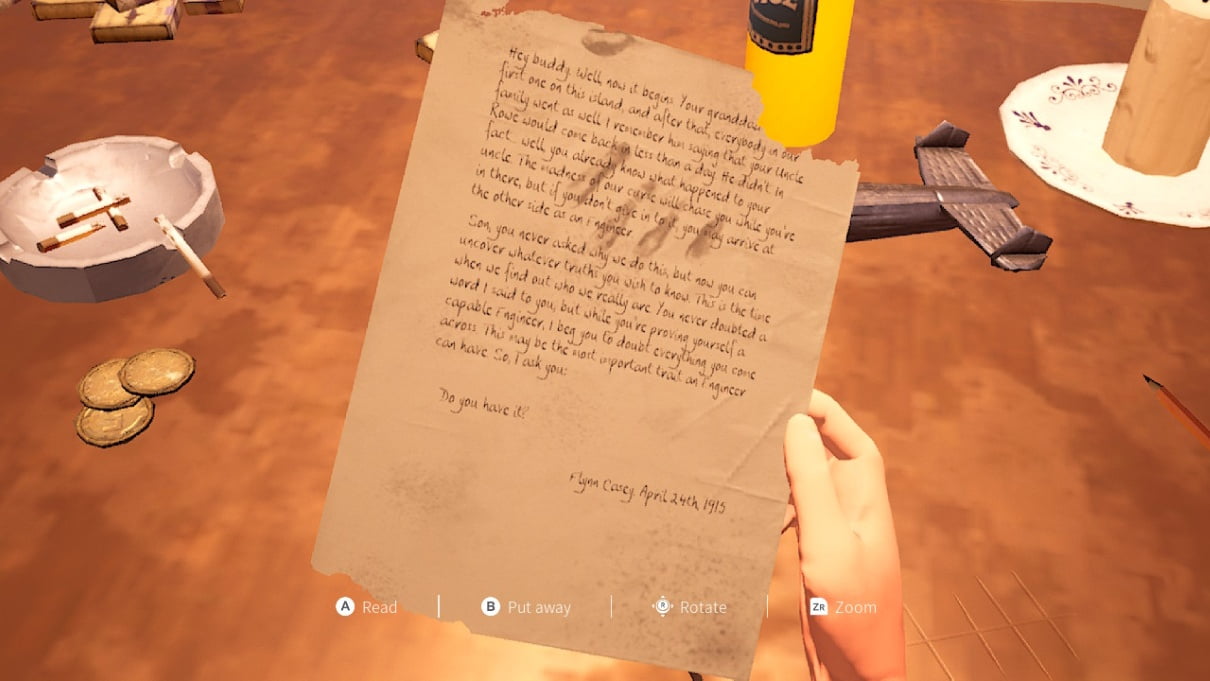
The next accessibility concern with Hazel Sky is its visuals, specifically with the texts, interaction visual cues, and collectible objects. Texts appear in many places in the game. There are in-game signboards with words on them, which you can read only directly from. If the words on the signboards are too difficult to see (especially possible on the Switch version with its rather low graphics quality), then too bad because there is no way to interact with the signboards to read a caption of them. Luckily, the collectibles all come with a description provided in a separate caption. While you may not need to strain your eyes to read the words off the various books and notes, you may find the caption texts to be a little small to read comfortably still. The bad news is there is no way to enlarge those caption texts in-game. Nonetheless, I would imagine this issue could be improved if one had a huge screen to play the game on in TV mode.
The subtitles and captions are not the only visually small things seen. In Hazel Sky, objects of interest are marked with a small, thin, white circular ring when Shane is near them. The interaction visual cue will then turn into a solid white circle of the same size as before, with an added button label, when Shane is within range to interact with them. In order to interact with an interactable object, Shane’s distance to it has to be very close — basically, right next to it. There are a few objects where Shane was a mere step away from but still could not interact with them.
Due to their small size, the interaction visual cues are easy to miss, particularly if they are located on the floor. Depending on the object’s location, the white ring does not always have good contrast against the background color too. What’s more, some of the collectible items lying on the ground are incredibly small. One of the objects is only as large as the interaction visual cue itself! Badges and trinkets are small as well, but at least they did not make me feel like I was searching for a needle in a haystack.
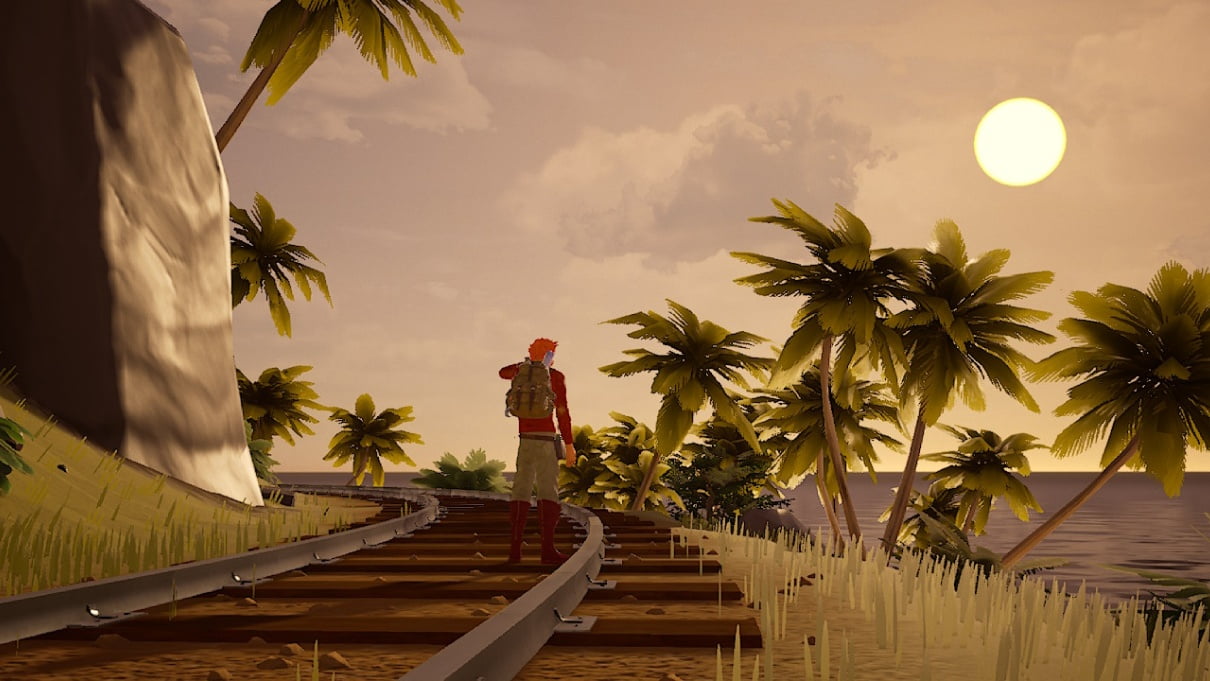
Although the free and easy exploration is one of my favorite aspects of Hazel Sky, my experience hunting for a few collectibles was made frustrating by the difficult-to-notice interaction visual cues. The game’s lack of a map also made the collectibles search more difficult as I found myself constantly lost running around the second venue. The first venue has a straightforward floor-by-floor structure, the third venue has a fixed train track to help me mark my route, and there is hardly anywhere else to go to in the fourth venue. Without any noticeable structure in its layout, the second venue is by far the easiest to get lost in. I even tried barging my way into an offshore tower I could spot across the sea on the second venue, only to realize that the building is the same first venue I had just departed from.
Still, something I like concerning Hazel Sky’s game design is its guitar music mini-game. Altogether, there are six music notes to be found, it will show the first three to four chords to be played on an interactable guitar. When the chords are input correctly as Shane sits with a guitar in hand, he will automatically start singing the whole song. You can easily stop the song or chord input by pressing the B button to exit the scene. More importantly, there is no noticeable time limit within which you have to input the chords. The main requirements are for the input to be correct and in sequence, and not reset by a scene exit or a swap of the chords list. I have timed my chord inputs to be 1-minute apart and the song still gets played. In addition, you can play any of the six songs right from the first chapter as long as you know the chords already. Nevertheless, I wished the lyrics were shown as subtitles during the clips when the songs play.
Hazel Sky also makes use of a convenient autosave system. However, I would have preferred an additional manual save system with multiple save slots since the game neither lets you backtrack to a previous venue nor has a chapter select function.
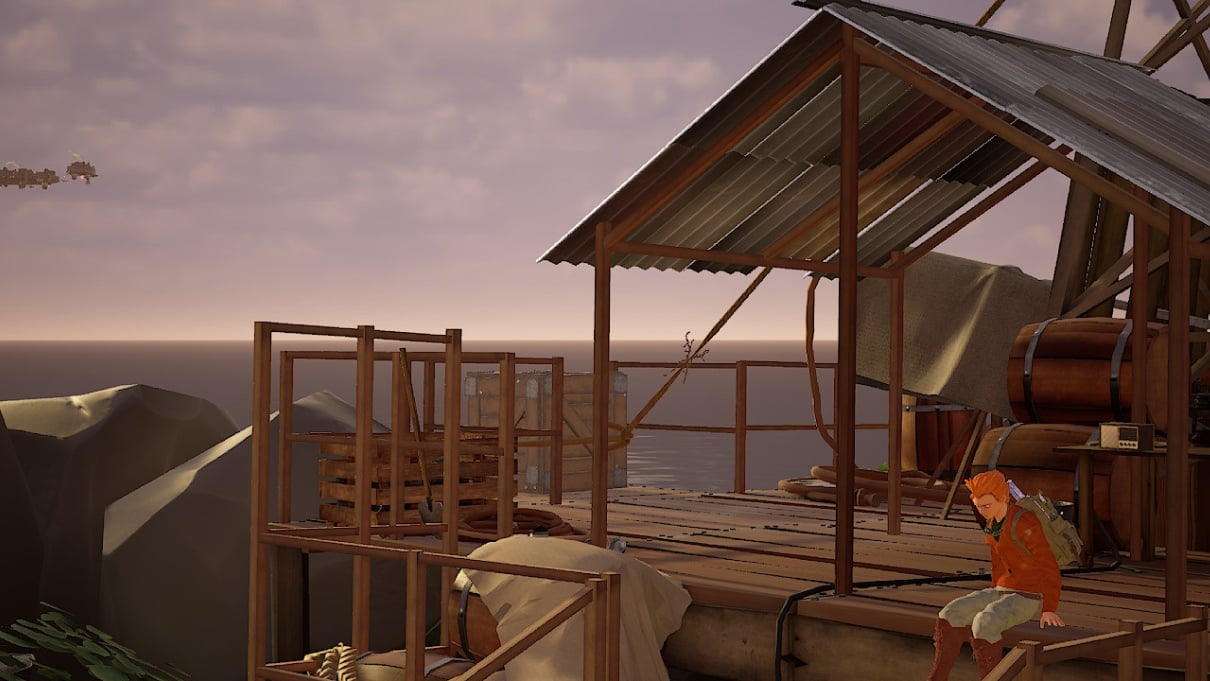
Verdict
Over a series of beautiful serene views and generally casual puzzles, Hazel Sky sets forth a young engineer’s introspective road to finding his true wish buried amongst his duties and desires. Despite the context of an engineer’s Trials, you will actually not learn much about what it means to be an engineer or even about the seemingly vast world of Gideon. The action tasks could get tiring to complete due to the constant need to hold the grip button in most cases too. Still, there is fun to be had sprinting across the open lands, swinging from the ropes, strumming the guitar strings, and singing along to the songs.
WAIT FOR SALE ON HAZEL SKY

If you enjoy Adventure games, perhaps you’d like to take a look at The Eternal Cylinder?
Many thanks go to Neon Doctrine for a Nintendo Switch review code for this title.

A person with many hobbies (and even more WIPs), KuroKairin plays, playtests, and reviews PC games. She loves games with good stories that bring her on an emotional and thought-provoking journey. Her favourite genres include otome visual novel, point and click, puzzle, and RPG. Follow her @KuroKairin.

